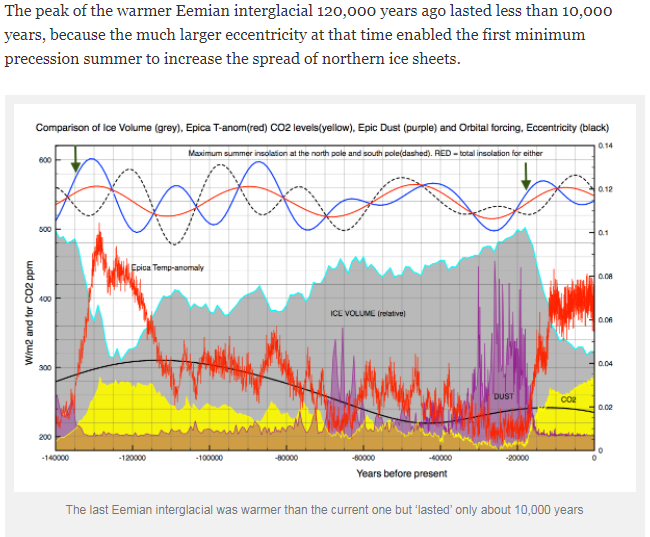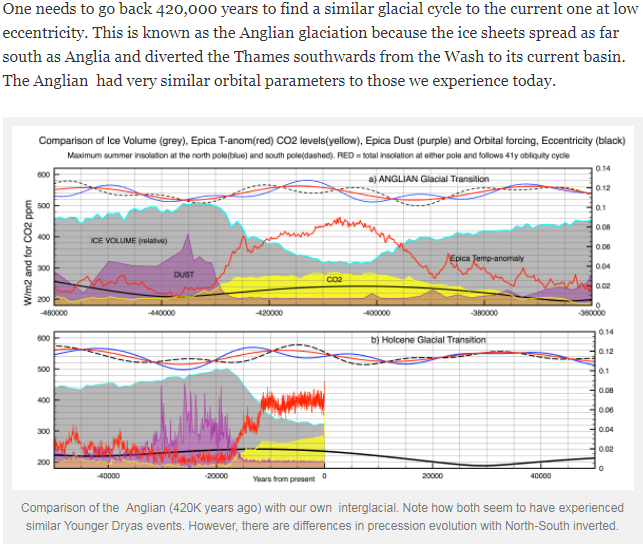- Home
-
Articles
-
2017
>
- North Korea; A Reflection of a Global Hybrid Conflict
- Turkish Crisis: World War III but nobody knows what side they are on?
- Glaciers or Rising Oceans; Damned if you do, damned if don’t, And maybe both
- Walls, Walls, Walls
- France's Hybrid Civil War
- Predictions of space exploration for the next 500 years
-
2018
>
- NOAA shows a modest 3.2mm sea level rise over the last year. How significant is the current sea level raise from a geological perspective?
- Mexico’s Quasi Hybrid Insurgency and a Reflection on Murder Rate Statistics
- Russia strives for imperial might in the context of the first World Hybrid War
- Paleohydrological events from the late Pleistocene to the early Holocene 30kya to 1500 AD
-
2019
>
- Micro Interglacial Cycles and an alternative understanding to Sea Level Fluctuations from a Paleoclimatic Perspective the Last 140,000 years
- Increasing Summer Insolation of the Northern Hemisphere Trends Towards Reduced Ice Volume; Coupled by a 400,000 year Eccentricity Cycle Extending the Holocene Interglacial
- Why are the Chinese Grumpy: Up to 500 million people died from famine, natural disasters, war, political suppression, ethnic cleansing, pestilence and such the last 2200 years
- China's New Dynasty: Middle Class, Automobile, Science, and Robot Revolution
- Orbital Variations Effects on Interglacial Behavior and Paleohydrological Events during the Quaternary Ice Age: A Compilation of MOTM editorial pieces
- Native American Society and Civilization Collapse Part I; Old World Diseases and Expansion/Collapse of Empires not Unique to European Colonization
-
2020
>
- The History of the “Sieg Heil” Nazi Salute and its shared common origins with the Roman Salute, Bellamy salute, and the swearing in of the Mexico President; And the not so innocent raising of the Fist of Black power
- In the excitement of the 2019-2020 Bush Fires in Australia; people have forgotten about the Legendary Australian Bush Fire of 1974-1975. The Current Bush Fire doesn’t even hold a torch up to it
- Covid 19 Crisis; what does age have to do about it in Italy, forgotten cancer crisis caused by the financial crisis in 2009, and why Africa doesn’t care
- A Quick Look at Nuclear Power in 2020 and Beyond
- India: Rising Economic Star with a Contentious and Troubling Past
-
2017
>
- BulletinNews
- MOTM EM
- Video
- Meetings/Symposium
- Podcasts
- Contributing Organizations
|
An example of an interstadial similar to current climate events is an inter-glacial event that happend roughly 130,000 to 115kya years ago known as the Eemian. During the Eemian the global temperature were several degrees Celsius higher than it is today and the oceans were 20-30 feet deeper. This of course is not even considered an anomaly, it is estimated that all the inter-glacial periods might have had similar climate conditions as the Eemian during the Pleistocene. In attempts to understand the current interglacial period, known as the Holocene, scientists have observed that the Eemian period is not quite like the Holocene because it had a sharper temperature increase with no Younger Dryas effect, higher temperatures, and a temperature peak lasting less then 10,000 years. Some of the reasons for this are explained by eccentricity, “The orbital eccentricity of an astronomical object is a parameter that determines the amount by which its orbit around another body deviates from a perfect circle. A value of 0 is a circular orbit, values between 0 and 1 form an elliptic orbit, 1 is a parabolic escape orbit, and greater than 1 is a hyperbola.” “Eccentricity is important because it regulates the strength of polar maximum summer insolation caused by precession of the equinoxes every 21,000 years. Precession determines the distance from the sun during a Polar summer. If summer coincides with the earth’s perihelion then summer insolation can be up to 20% higher than average. However if the earth’s orbit is nearly circular, as it is today, then precession has little effect at all. That is why we have about 12000 years left before cooling begins.” October 4, 2016 by Clive Best, When is the next ice age due? In order to compare current climate changes to the past we need to look at an interglacial period with a similar eccentricity. Two observations from these charts come to play. The first is the current interglacial period, Holocene, is only half over. And if the Holocene is anything like the Anglian interglacial period temperatures are set to continue to rise if they correlate with EPICA (European Project for Ice Coring in Antarctica) temperatures reported for the Anglian interglacial period.
"We can argue about how warm the peak temperature will get and CMIP5 models vary about this roughly between 2 and 5 degrees. However this manmade climate disturbance should last for not much more than 3000 years so long as our emissions are reduced before 2100. The real question is what level we should then try to keep CO2 to avoid another devastating glaciation in 13,000 years time? If we want to survive long term then probably we should never let CO2 fall below 300ppm ever again!"October 4, 2016 by Clive Best, When is the next ice age due? Paleohydrological Events From the Late Pleistocene to the Holocene 30KYA to 1500AD
0 Comments
|
Proudly powered by Weebly
- Home
-
Articles
-
2017
>
- North Korea; A Reflection of a Global Hybrid Conflict
- Turkish Crisis: World War III but nobody knows what side they are on?
- Glaciers or Rising Oceans; Damned if you do, damned if don’t, And maybe both
- Walls, Walls, Walls
- France's Hybrid Civil War
- Predictions of space exploration for the next 500 years
-
2018
>
- NOAA shows a modest 3.2mm sea level rise over the last year. How significant is the current sea level raise from a geological perspective?
- Mexico’s Quasi Hybrid Insurgency and a Reflection on Murder Rate Statistics
- Russia strives for imperial might in the context of the first World Hybrid War
- Paleohydrological events from the late Pleistocene to the early Holocene 30kya to 1500 AD
-
2019
>
- Micro Interglacial Cycles and an alternative understanding to Sea Level Fluctuations from a Paleoclimatic Perspective the Last 140,000 years
- Increasing Summer Insolation of the Northern Hemisphere Trends Towards Reduced Ice Volume; Coupled by a 400,000 year Eccentricity Cycle Extending the Holocene Interglacial
- Why are the Chinese Grumpy: Up to 500 million people died from famine, natural disasters, war, political suppression, ethnic cleansing, pestilence and such the last 2200 years
- China's New Dynasty: Middle Class, Automobile, Science, and Robot Revolution
- Orbital Variations Effects on Interglacial Behavior and Paleohydrological Events during the Quaternary Ice Age: A Compilation of MOTM editorial pieces
- Native American Society and Civilization Collapse Part I; Old World Diseases and Expansion/Collapse of Empires not Unique to European Colonization
-
2020
>
- The History of the “Sieg Heil” Nazi Salute and its shared common origins with the Roman Salute, Bellamy salute, and the swearing in of the Mexico President; And the not so innocent raising of the Fist of Black power
- In the excitement of the 2019-2020 Bush Fires in Australia; people have forgotten about the Legendary Australian Bush Fire of 1974-1975. The Current Bush Fire doesn’t even hold a torch up to it
- Covid 19 Crisis; what does age have to do about it in Italy, forgotten cancer crisis caused by the financial crisis in 2009, and why Africa doesn’t care
- A Quick Look at Nuclear Power in 2020 and Beyond
- India: Rising Economic Star with a Contentious and Troubling Past
-
2017
>
- BulletinNews
- MOTM EM
- Video
- Meetings/Symposium
- Podcasts
- Contributing Organizations



 RSS Feed
RSS Feed